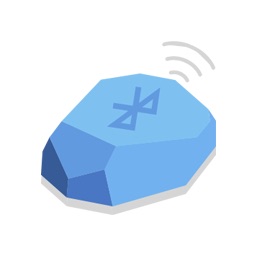Beacons, iOS and You

What are beacons?
a) A tiny piece of plastic.
b) A low energy bluetooth device.
c) An emerging technology with numerous applications.
d) All of the above.
If you guessed all of the above, you would be correct! Beacons are an IoT technology that is deceptively simple and small but packs a potentially large punch for app developers looking for new and interesting ways to engage their customers.
What do beacons do?
Beacons are (typically) small devices that emit a bluetooth signal. They utilize Bluetooth Low-Energy (BLE) tech to send out the signals, which can be picked up by any Bluetooth enabled device.
Beacons can be a very handy tool for developers looking to trigger actions or different application behavior based on the location (or proximity to a beacon) of the user. Since Bluetooth signals can be picked up by a user’s device while offline, beacons offer a distinct advantage over typical GPS-based location tracking.
How can I use beacons in my app?
Beacons are already being used in retail stores and event venues. In retail stores, the beacons can give an experience tailored to the user’s movements. For example, if a store is having a sale on shoes, they can install a beacon in the shoe department. When a user comes within proximity of the beacon, they will receive a notification that the sale is going on, complete with a scannable coupon.
At event venues or during conferences, vendors are always looking to make sure they reach the largest potential base of customers possible. Beacons can be used to provide real, live data to venues and vendors about attendees’ movement patterns. Beacons can track the length of time a user is in their proximity, allowing developers to analyze traffic flow and see where users are stopping. This data is invaluable in tailoring a conference to the attendees.
How do I implement beacon technology in my app?
1. Buy a beacon. Some common beacon manufacturers include Gimbal, Eddystone, and Estimote. I will focus on Gimbal here. Gimbal’s implementation is exceedingly simple and quick.
- Add the Gimbal pod to your podfile.
-
Import the Gimbal library in your AppDelegate file.

- Set your Gimbal APIKey and start the Gimbal service in your AppDelegate.m file.

- Add the GMBLBeaconManagerDelegate to your ViewController file.

- Add Gimbal delegate methods to ViewController and tell your app to start listening for Gimbal signals.

In the Gimbal delegate methods, s a number of properties of the beacon and sighting are accessible, and can be used in many creative ways. More information can be found here.
As shown above, beacons are extremely simple to get up and running. This, combined with their numerous possible applications, makes beacons a unique and powerful tool for developers to engage users on a whole new level.